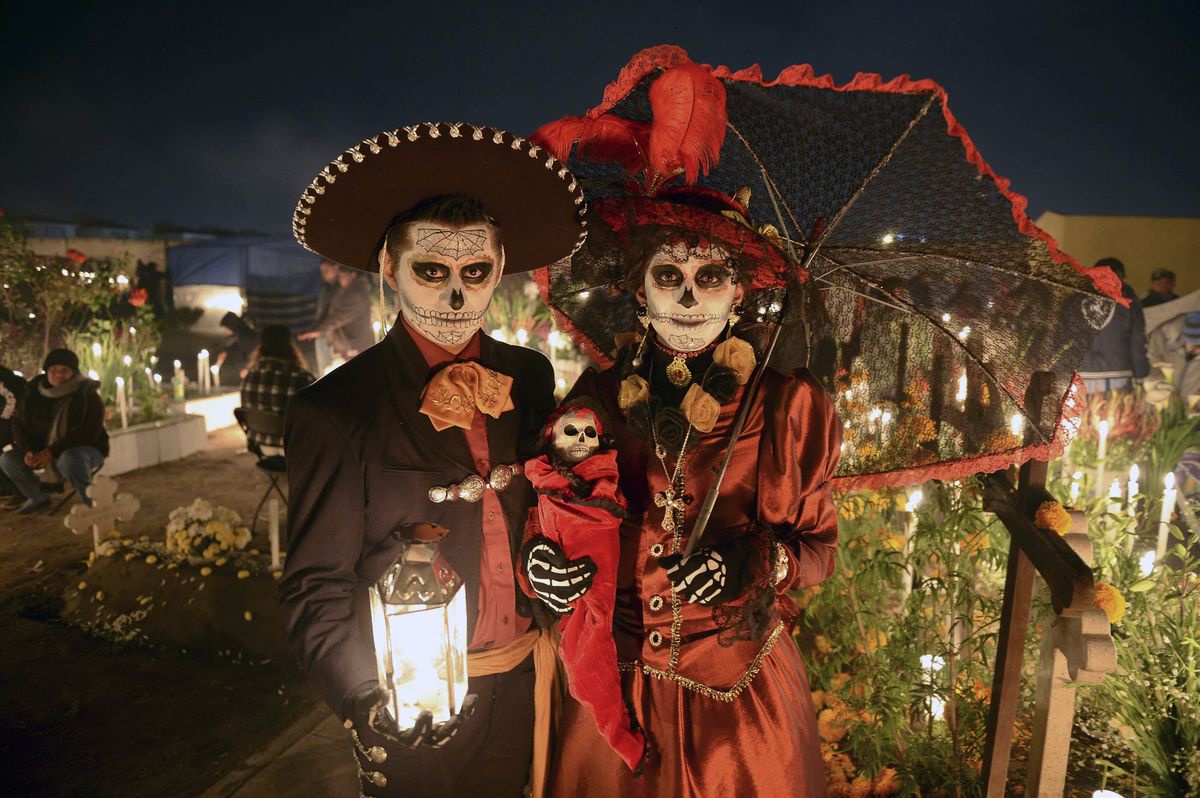From the beginning of time, man has felt the need to explain the mystery of life and death, and has asked himself questions like "Where did I come from?", "Why does life end?", "Is there life after death? If so, what kind of life?", "Is there something I can do on earth so I can enjoy life after death?" Many civilizations and cultures have created rituals to try and give meaning to human existence.
History
More than 500 years ago, when the Spanish Conquistadors landed in Mexico, they came across natives embracing a ceremony that seemed to mock death. The indigenous people had been practicing this ceremony for at least 3,000 years; and the ceremony was one that the Spaniards would try unsuccessfully to abolish. This ancient ceremony continues today in Mexico and in certain parts of the southwest; and is known as Dia de los Muertos, or Day of the Dead.
When Festival Start?
Originally the celebration fell in the ninth month of the Aztec calendar, about the beginning of August, and was celebrated for an entire month. The festivities were dedicated to the goddess Mictecacihuatl, also known as the "Lady of the Dead" who was thought to have died at birth. A modern-day image of Mictecacihuatl is that of Catrina. Jose Guadalupe Posada created a famous print of a figure he called La Calavera de la Catrina (skull of the rich woman) as a parody of a Mexican upper-class female. Posada's arresting image of a costumed female with a skeleton face has become associated with the Day of the Dead, and Catrina figures are a well-known part of modern Day of the Dead observances.
The Aztecs and other Meso-American civilizations kept skulls as trophies and displayed them during the celebration. The skulls were used to symbolize death and rebirth as well as honor the dead, whom the ancient civilizations believed came back to visit during the month-long ritual.
Unlike the Aztecs, who embraced death, viewing it as the continuation of life, the Spaniards feared death and considered it to be the end of life. Consequently, the Spaniards thought the indigenous people to be barbaric and pagan; and regarded the ritual to be sacrilegious. As a result of this perception, the Spaniards attempted to convert them to Catholicism and destroy the offending ritual. However, just like the ancient Aztec spirits, the ritual refused to give up the ghost!
Subsequently, to make the ritual more Christian, the Spaniards moved it so it corresponded with All Saints Day and All Souls' Day, November 1st and 2nd.
When Celebrate In Mexico
In most regions of Mexico, November 1st honors children and infants, whereas deceased adults are honored on November 2nd. November 1st is referred to Dia de los Angelitos (Day of the Little Angels); and November 2nd is regarded as Dia de los Muertos or Dia de los Difuntos (Day of the Dead).
During the celebration, people trek to cemeteries to be with the souls of the departed and build private alters containing the favorite foods and beverages, as well as photos and memorabilia, of the departed. The objective is to persuade visits by the souls so the souls will hear the prayers and comments of the living aimed at them. Celebrations can take on a humorous tone, as celebrants relate amusing events and stories abut the departed. During this time, families clean and decorate graves with ofrendas (offerings), which often include orange Mexican marigolds.
Toys are brought for dead children (los angelitos) and bottles of tequila, mescal or jars of atole, a corn-based drink, for adults. Families will also offer trinkets or the deceased's favorite candies on the graves.
Families often build altars or small shrines in their homes. These usually have the Christian cross, statues or pictures of the Blessed Virgin Mary, pictures of deceased relatives and other persons, and scores of candles. Altar ofrendas are usually foods such as candied pumpkin, pan de muerto (bread of the dead), sugar skulls and beverages. Some people believe the spirits of the dead eat the "spiritual essence" of the ofrendas food, so although the celebrators eat the food after the festivities, they believe it lacks nutritional value. The families spend time around the altar, praying and telling stories about the deceased. In some locations, celebrants wear shells on their clothing, so when they dance, the noise will wake up the dead.
Conclusion:
The vigil to honor the dead usually concludes with the vigil in the cemetery. Sometimes, the vigil is completed after spending the entire night in the cemetery. Sometimes, the vigil is held during the day. Mysticism is the rule in the cemeteries, but in many vigils music is also part of the ritual that blends religious prayers with the sounds of a Mariachi trumpet.
Sometimes a trio sings a song by the tomb. Sometimes, ritualistic dances are performed. Whichever method is chosen to honor the dead, the Day of the Deadis a time of contemplation about the meaning of life and the mission that one is obliged to fulfill? Death oftentimes conveys a feeling of pain and loss, especially for those who are unaware of their purpose on this earth. For others, death is inspirational, transformational, and rebirth. During the celebration of the Day of the Dead, all these feelings and beliefs come together in a season that brings to life the memory of loved ones.


No comments yet